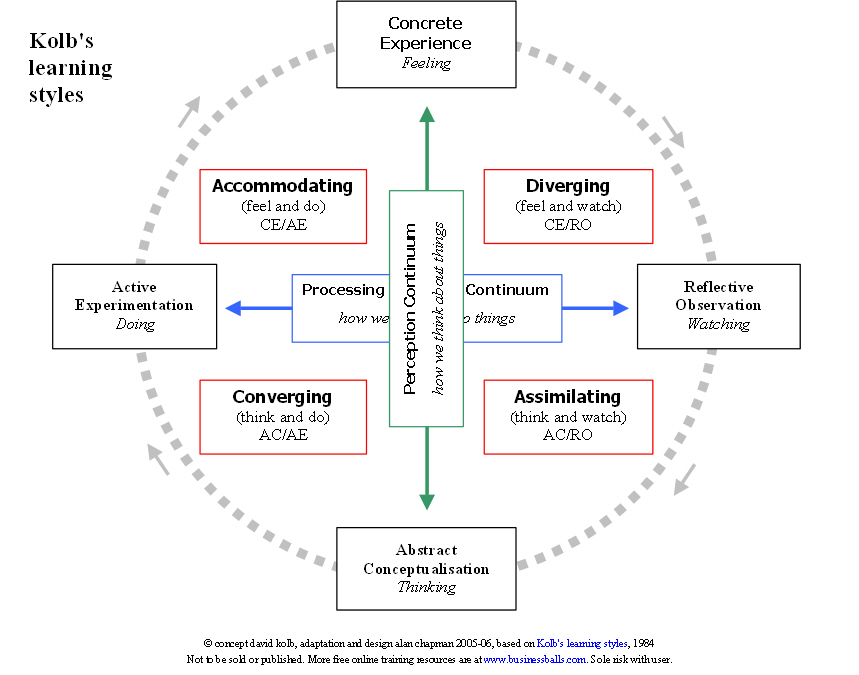I am yet to try on me :-)
- This looks good, easy and comprehensive
http://www.brianmac.co.uk/learnstyle.htm
The questionnaire is based on the Honey & Mumford Learning Styles Questionnaire (LSQ) - (Honey & Mumford 2001) [1]. For each of the questions below select whether you "Agree" or "Disagree". When you have completed this select the "Analyse" button to identify your learning style preference. The test can be repeated by selecting the "Reset" button
- This survey is designed to help you gain an understanding of learning styles so that you can incorporate the various learning styles in your daily learning activities. It is NOT meant to show you your best way of learning as the research does not promote that. Rather, it is a tool for learning-to-learn (metalearning) in order to increase self-awareness about your strengths and weaknesses as a learner so that you will try to use the correct method for learning a task or subject, rather than sticking with a preferred method. http://www.nwlink.com/~donclark/hrd/styles/honey_mumford.html
http://www.nwlink.com/~donclark/hrd/styles/learn_style_survey.html
- A little reminder, taken from the site below:
The effective learner relies on four different learning modes: http://casa.colorado.edu/~dduncan/teachingseminar/KolbLearningStyleInventoryInfo.pdf
- Concrete Experience (CE),
- Reflective Observation (RO),
- Abstract Conceptualization (AC), and
- Active Experimentation (AE).
That is, he must be able to involve himself fully, openly, and without bias in new experiences (CE), he must be able to reflect on and observe these experiences from many perspectives (RO), he must be able to create concepts that integrate his observations into logically sound theories (AC), and he must be able to use these theories to make decisions and solve problems (AE).
A high score on Concrete Experience represents a receptive, experience-based approach to learning that relies heavily on feeling-based judgments. High CE individuals tend to be empathetic and "people-oriented." They generally find theoretical approaches to be unhelpful and prefer to treat each situation as a unique case. They learn best from specific examples in which they can become involved. Individuals who emphasize Concrete Experience tend to be oriented more towards peers and less toward authority in their approach to learning, and benefit most from feedback and discussion with fellow CE learners.
A high score on Abstract Conceptualization indicates an analytical, conceptual approach to learning that relies heavily on logical thinking and rational evaluation. High AC individuals tend to be oriented more towards things and symbols and less towards other people. They learn best in authority-directed, impersonal learning situations that emphasize theory and systematic analysis. They are frustrated by and benefit little form unstructured "discovery" learning approaches like exercises and simulations.
A high score on Active Experimentation indicates an active, "doing" orientation to learning that relies heavily
on experimentation. High AE individuals learn best when they can engage in such things as projects, homework, or small group discussions. They dislike passive learning situation such as lectures. These individuals tend to be extroverts.
A high score on Reflective Observation indicates a tentative, impartial and reflective approach to learning.
High RO individuals rely heavily on careful observation in making judgments, and prefer learning situations such as lectures that allow them to take the role of impartial objective observers. These individuals tend to be introverts.




